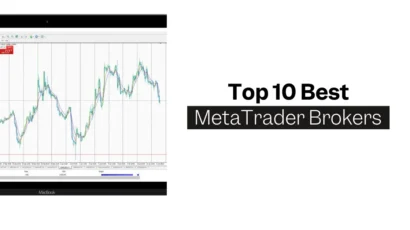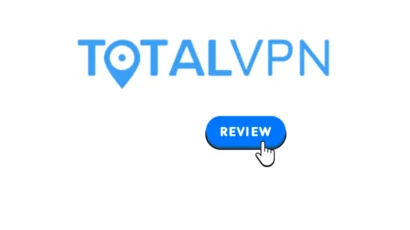Disclosure: Privacy Australia is community-supported. We may earn a commission when you buy a VPN through one of our links. Learn more.
Another One Bits the Dust—Facebook’s Cryptocurrency Shuts Down
Meta, formerly known as Facebook, has announced plans to shut down their cryptocurrency wallet and the cryptocurrency associated with it on September 1st. The service was called “Novi”, and was considered to be in public beta, along with the “Diem” cryptocurrency that was launched alongside it.
Originally launched in 2020, Diem was branded as being a stablecoin-backed cryptocurrency similar to Terra Luna or USD Coin. It was tied to the Facebook marketplace, where it could be bought directly from Facebook for fiat currency. Currently, the Novi wallet website advises users to withdraw funds.
But why is this happening? Why was it launched, and why is it crashing?
The History of Novi and Diem
Meta has been toying with the idea of a cryptocurrency since 2017. Strangely, they had literally one person working on the project: A programmer named Morgan Beller who was tasked with developing the protocol around the blockchain that Novi hosted and that Diem used for trading.
Things went well, however, and Beller was eventually given a team of 50 with whom to develop the project. At this point it was called the “Libra Association” and was conceptualised as a centralised cryptocurrency, quite at odds with the normal design of cryptocurrency.
Libra would go on to be renamed Diem when it launched, with the Libra Association becoming the Diem Association.
The inspiration clearly comes from the use of Facebook as a central hub of social networking. Similar to how you can use Facebook (more commonly Google for most internet users at this point) to easily sign up for and sign in to certain services, Novi would be a wallet that connected similar sites.
Enter Coinbase
That plan might sound familiar to anyone who has used Coinbase. It is a cryptocurrency wallet and exchange site that works to bring together all forms of cryptocurrency, as well as the people trading them. It makes sense then that Meta reached out to Coinbase to host their new wallet.
That is exactly what happened. But the decentralised finance goals of Coinbase were fundamentally at odds with the digital world bank that Meta was looking to establish.
Essentially, the problem boiled down to Meta’s idea for the protocol behind the Diem currency. Rather than it being permissionless, like Bitcoin, all transactions would have to be approved by the Diem Association. This was too much like a normal bank for regulators to ignore.
Trying to Get Licensed
Meta’s Vice President David Marcus and President Mark Zuckerberg were investigated for bank fraud due to the unusual nature of Diem. In the US, they were trying to argue that they were not a bank, but a cryptocurrency trading service similar to Coinbase. This meant they could skirt banking regulations.
But at the same time, they were arguing the opposite to the Swiss government. They did not want to compete with Coinbase directly, so they set their sites on primarily trading cryptocurrencies that were backed by fiat currencies directly. But at that point there was no difference between them and a bank.
They acknowledged this internally and sought international bank licensing from Switzerland. Due to their privacy laws and lack of regulation on crypto, Switzerland was the only country that could give them an international banking licence. Even though this was technically fraud on a massive scale, Switzerland would only allow their endeavour to be investigated if it violated Swiss law.
Changing Gears and Stalling Out
That did not pan out. The Swiss government had no interest in humouring their attempts to commit fraud and use them as a shelter against regulations. Eventually the Swiss parliament would pass laws forcing them to investigate Meta no matter what, so affording them asylum was pointless.
Since they were too much of a bank for the United States and too little of a bank for Switzerland, Meta was forced to redirect Diem’s functionality into what they called a “money service business”.
This is how they ended up developing the Novi wallet. Basically, it holds cryptocurrency… And that’s it. No additional security features, no trading, not even buying anything besides Diem.
It is about that time that Diem started to crash. And then 2022 happened.
2022 and Crypto
As you have probably heard, 2022 has not been a kind year for cryptocurrency. It has not been as bad as it seems, as a big part of what is happening is a correction from 2021’s growth.
In 2021, everything and everyone was recovering from the pandemic. The massive recession in 2020 gave way to an explosion of value. There were almost no dips in 2021. Stocks were going up, housing was getting more valuable, and cryptocurrencies were going to the moon.
You can see this reach its zenith in November of 2021, when Bitcoin at $64,000 a token. That price is staggering, especially since it is less than a third of that today. But everything was like that at the time.
Come April of 2022 and the combined weight of the crypto bubble in conjunction with raising interest rates in the United States and the war in Ukraine disrupting supply lines dependent on Russian oil, everything began to correct to its actual value. And that hit everyone.
Where is Diem Now?
The price of Diem is currently $0.00000247 per token. That is a lot of zeroes. Is Meta going to reimburse people for the money they lost loading up that coin right before they announced it would be discontinued? Nope! Of course not. And this is not the only currency that suffered this fate.
Terra Luna, a currency known for being a stable coin tied to the Terra platform’s Bitcoin holdings, went from being worth $100 per token in April to less than $0.00000001 per token in May. Even USD Coin, one of the most consistent stable coins in the world, had price fluctuations due to inflation of the USD.
Conclusion
So-called “stable coins” have been hit the hardest by the cryptocurrency crash of this year. Be careful trading in such currencies as this. They are so new and so volatile that they can be both a boon and a hindrance.





